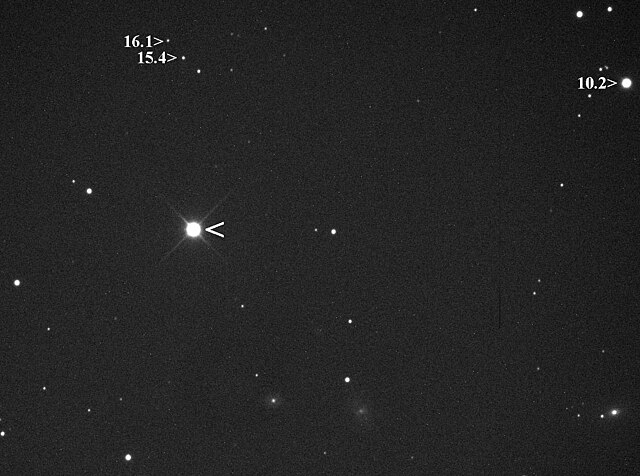RS Ophiuchi is a recurrent nova system approximately 5,000 light-years away in the constellation Ophiuchus. In its quiet phase it has an apparent magnitude of about 12.5. It has been observed to erupt in 1898, 1933, 1958, 1967, 1985, 2006 and 2021 and reached about magnitude 5 on average. A further two eruptions, in 1907 and 1945, have been inferred from archival data. The recurrent nova is produced by a white dwarf star and a red giant in a binary system. About every 15 years, enough material from the red giant builds up on the surface of the white dwarf to produce a thermonuclear explosion. The white dwarf orbits close to the red giant, with an accretion disc concentrating the overflowing atmosphere of the red giant onto the white dwarf.
Recurrent nova RS Ophiuchi in eruption of February 2006
Image of RS Oph in 2021 outburst from Nakhodka
radio profile of RS Ophiuchi, together with the fireball as seen by VLTI 5.5 days after outburst (coloured ellipses).
A nova is a transient astronomical event that causes the sudden appearance of a bright, apparently "new" star that slowly fades over weeks or months. All observed novae involve white dwarfs in close binary systems, but causes of the dramatic appearance of a nova vary, depending on the circumstances of the two progenitor stars. The main sub-classes of novae are classical novae, recurrent novae (RNe), and dwarf novae. They are all considered to be cataclysmic variable stars.
Artist's conception of a white dwarf, right, accreting hydrogen from the Roche lobe of its larger companion star
Nova Eridani 2009 (apparent magnitude ~8.4)
GK Persei: Nova of 1901
Nova in Andromeda Galaxy







